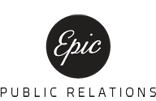 I once had a job where, in addition to several other responsibilities, I was the editor of a bi-weekly association newsletter that had 8,000 readers. I worked there for two years and in that time I probably pumped out more than 50 newsletters. It was a highly read newsletter and I learned a lot while working on it. While I can’t take all the credit for the newsletter’s success (I worked with a fabulous internal team), I will take credit for being instrumental in redesigning and re-launching the association’s publication, which included concept development, editorial, photography, advertising, design, layout, and production. As a follow-up to a previous post “From Good to Great Newsletters, Part I: Content“, here are some tips that focus more on actually writing a newsletter. A newsletter can be an excellent tool to keep an interested audience up-to-date and informed about your organization’s activities, progress, products and/or services, position on an issue and people. Plus, a big bonus is that the production costs are low and newsletters are easy to distribute – particularly if they are Web-based.
I once had a job where, in addition to several other responsibilities, I was the editor of a bi-weekly association newsletter that had 8,000 readers. I worked there for two years and in that time I probably pumped out more than 50 newsletters. It was a highly read newsletter and I learned a lot while working on it. While I can’t take all the credit for the newsletter’s success (I worked with a fabulous internal team), I will take credit for being instrumental in redesigning and re-launching the association’s publication, which included concept development, editorial, photography, advertising, design, layout, and production. As a follow-up to a previous post “From Good to Great Newsletters, Part I: Content“, here are some tips that focus more on actually writing a newsletter. A newsletter can be an excellent tool to keep an interested audience up-to-date and informed about your organization’s activities, progress, products and/or services, position on an issue and people. Plus, a big bonus is that the production costs are low and newsletters are easy to distribute – particularly if they are Web-based.
My random writing tips:
- Give your newsletter one owner to maintain consistency, format and tone. Even if there is more than one writer, the editor is responsible for tying the content together.
- The secret of writing is to leave space. Write short sentences, they are easier to digest. Two short sentences are easier to read than one long one.
- Punctuation makes reading easier, it gets pauses down on paper and stresses important points (use hyphens, dashes, ellipses).
- Be personal. Use the word “you”. You’re writing a newsletter to a reader — one that’s a current target audience — so talk to that reader. Try not to be too impersonal. For example, “the customer”.
- When possible, talk about people. We enjoy, and are better readers when, reading about other people more than about anything else. Sentences can be written so that the logical subject is a person. Use personal pronouns (theirs, yours, you) or human interest words (woman, man, child, boy).
- Use active verb forms that have life in them (dance, sing, add, run, etc.). These words make your sentences move.
- Work with a graphic designer to create a professional design for your publication. With a good template in hand, you’ll be better prepared to knock off future issues.
- Keep it simple. Use strong but short headlines that have a subject-object-verb format. Use sub-headings to break-up copy, incorporate images to enhance a story and sprinkle pull quotes on each page to draw attention to a poignant statement.
- Write at the eighth grade level – not because your readers are dumb but because this is the standard newspapers use. Why use big words when simple ones will do?
- Should your newsletter be print or an e-newsletter? The advantage of the latter is that email newsletter programs allow you to track click-thrus, which is available real-time. A published newsletter potentially has more longevity – readers have the convenience of taking it home, giving it to their colleague to read, etc. Please keep in mind that we live in a green world – if you must print, use recycled paper.
P.S. One last thing, survey your readers annually to evaluate, gather feedback and collect new ideas. It’s such a simple idea yet many organizations fail to do it.
Maria Loscerbo

pooja0908
May 6, 2010 -
Really good tips about newsletters. I have a question, what is eighth grade level? I have not heard about this.
Maria Loscerbo
May 7, 2010 -
It means to write content in a relatively simple manner and as if it were intended for a 12 or 13 year old. The goal is to write accessible copy for as broad an audience as possible.